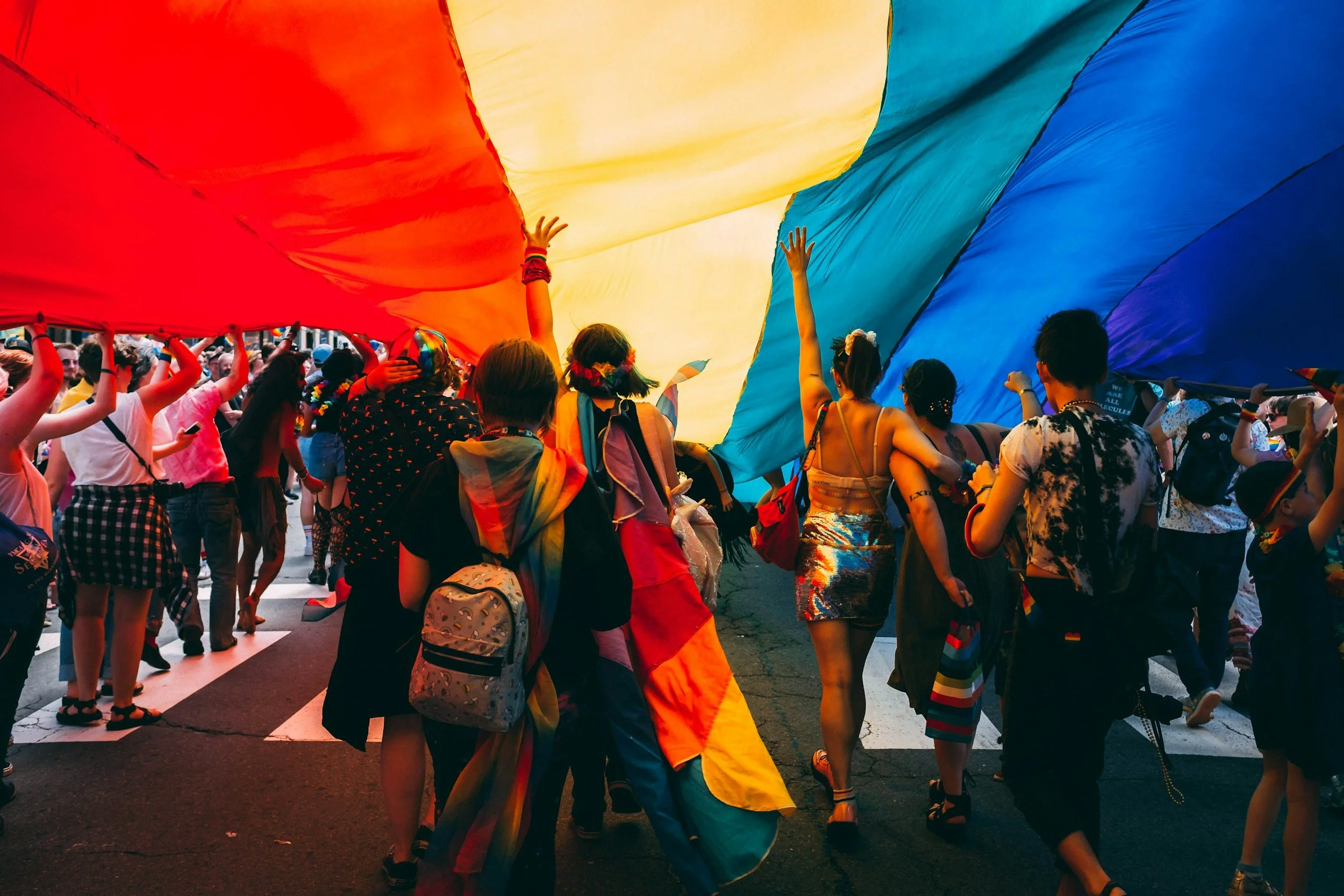The impact of gender discrimination on LGBTQ+ individuals: navigating multiple barriers
LGBTQ+ individuals face the world with a variety of challenges, despite growing visibility, acceptance, and legal progress. LGBTQ+ individuals continue to face the persistent barrier of discrimination. Gender discrimination, especially when added to an individual’s struggle with sexual orientation and gender identity, can deeply impact mental health, limit access to care, and erode a person’s sense of safety and self-worth.
It isn’t always loud. It often operates in ways that are invisible or normalized. It can show up in microaggressions, assumptions, and in systems that aren’t built to include LGBTQ+ voices or that are socially normalized.
It’s important to look beyond the means of what occurs outwardly, but also interpret interactions, spaces, and circumstances to recognize and prevent discrimination.
Examples of Non-Apparent Discrimination Against LGBTQ+ Individuals:
Assumptive Language: Some office forms or paperwork that only offer “male” or “female” options for gender, or questions like “Do you have a boyfriend/girlfriend?”. Or a public speaker using terms such as “ladies and gentlemen” erases identities outside of the binary or heteronormative spectrum.
Medical Gatekeeping: Transgender individuals are often required to undergo psychiatric evaluations or "prove" their identity before accessing care. Some are refused service based on “religious” or “moral” beliefs. Clinicians may unintentionally invalidate identities by focusing too heavily on sexual orientation or gender identity as the root of all problems.
Microaggressions: Include subtle, often unintentional, comments or behaviors that stem from negative stereotypes about the LGBTQ+ community. People asking questions such as: “Are you sure this isn’t just a phase?”, not taking the person’s identity seriously, or assuming an LGBTQ+ person is exotic and different.
Tokenism in DEI: Being invited into conversations or spaces only to “represent” a marginalized identity without meaningful inclusion or support. Asking someone to participate purely because of their gender identity and believing only LGBTQ+ individuals can educate on LGBTQ+ issues.
These experiences build over time. Even in well-meaning spaces, LGBTQ+ individuals are often confronted with subtle forms of discrimination that reinforce a sense of otherness. Repeated exposure to stigma and identity-based trauma can lead to complex psychological consequences for the person, damaging mental health.
LGBTQ+ Individuals Are at Higher Risk For:
Chronic anxiety and hypervigilance due to unsafe or invalidating environments
Major depressive episodes from sustained rejection or isolation
Post-traumatic stress symptoms following harassment, assault, or familial estrangement
Substance use as a coping mechanism
Suicidal ideation and attempts, especially among LGBTQ+ youth
Discrimination in Schools and Education
LGBTQ+ youth are especially vulnerable to gender discrimination in school and institutional settings, where policies, staff, and peers may reinforce binary gender norms or punish those who don’t conform.
Dress codes that enforce gender-specific clothing. Certain hairtyles, makeup looks, and other physical appearances being “reserved” for a specific gender, or an outright mandatory requirement for an individual to appear a specific way.
Denial of access to appropriate bathrooms, locker rooms, or other spaces that help an LGBTQ+ individual feel safe.
Teachers, instructors, and staff refusing to use correct pronouns or names, or address an individual how they want to be addressed.
Curriculum that erases or excludes LGBTQ+ perspectives, history, and education.
Peer bullying or isolation, often left unaddressed or ignored by staff.
These experiences can lead to school avoidance, anxiety, depression, and poorer academic performance.
Subtle Discrimination in the Workplace
Gender discrimination doesn’t always come in the form of harassment or job denial. It often looks like being passed over for leadership, being the subject of jokes, or constantly needing to correct coworkers who assume your identity.
Dress codes or policies that force binary gender expression, including an expectation for how a “male” and “female” should dress, without leaving room for other identities altogether.
Coworkers refusing to use the correct pronouns or names. Coworkers purposely ignore the individual or are reluctant to work with the individual.
Being outed without consent.
Lack of HR policies for gender-affirming accommodations.
Feeling pressured to “tone down” gender expression to fit in.
Even in states with anti-discrimination laws, bias and microaggressions can happen in subtle, persistent ways that undermine both well-being and career growth of an LGBTQ+ individual. Such barriers make it difficult to put out one’s best self, achieve promotions, and participate in the workplace.
Family Rejection and Social Isolation
While not always recognized as “discrimination,” rejection from family or close social networks based on gender identity is a deeply painful and harmful form of exclusion.
Refusing to use chosen names or pronouns.
Discouraging public expression of identity (“just don’t talk about it”).
Religious condemnation or guilt tripping.
Conditional love or acceptance (“we love you, but…”).
Replacing support with silence or shame.
The mental health needs of LGBTQ+ individuals are not separate from the impact of gender discrimination. It is directly shaped by it. By understanding both overt and subtle forms of bias, we open the door to healing, resilience, and safety. Everybody deserves to be seen, heard, and affirmed. For LGBTQ+ individuals, this affirmation can be the difference between surviving and thriving.





